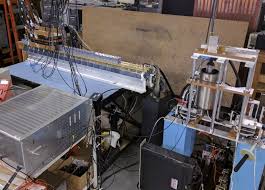
Breaking News
We Americans Need to Dig Deep into Historical Perspective
 A timeless clip of Michael Burry explaining how he used credit default swaps...
A timeless clip of Michael Burry explaining how he used credit default swaps...
 The next financial crisis won't start in a bank lobby. It's already brewing in the market
The next financial crisis won't start in a bank lobby. It's already brewing in the market
Top Tech News
 This tiny dev board is packed with features for ambitious makers
This tiny dev board is packed with features for ambitious makers
 Scientists Discover Gel to Regrow Tooth Enamel
Scientists Discover Gel to Regrow Tooth Enamel
 Vitamin C and Dandelion Root Killing Cancer Cells -- as Former CDC Director Calls for COVID-19...
Vitamin C and Dandelion Root Killing Cancer Cells -- as Former CDC Director Calls for COVID-19...
 Galactic Brain: US firm plans space-based data centers, power grid to challenge China
Galactic Brain: US firm plans space-based data centers, power grid to challenge China
 A microbial cleanup for glyphosate just earned a patent. Here's why that matters
A microbial cleanup for glyphosate just earned a patent. Here's why that matters
 Japan Breaks Internet Speed Record with 5 Million Times Faster Data Transfer
Japan Breaks Internet Speed Record with 5 Million Times Faster Data Transfer
 Advanced Propulsion Resources Part 1 of 2
Advanced Propulsion Resources Part 1 of 2
 PulsarFusion a forward-thinking UK aerospace company, is pushing the boundaries of space travel...
PulsarFusion a forward-thinking UK aerospace company, is pushing the boundaries of space travel...
 Dinky little laser box throws big-screen entertainment from inches away
Dinky little laser box throws big-screen entertainment from inches away
 'World's first' sodium-ion flashlight shines bright even at -40 ºF
'World's first' sodium-ion flashlight shines bright even at -40 ºF
Railguns Stabiliize ITER Nuclear Fusion Plasma Three Times Faster than Gas Guns

Princeton has developed an electromagnetic particle injector (EPI) which is a type of railgun that fires a high-velocity projectile from a pair of electrified rails into a plasma on the verge of disruption. The projectile, called a "sabot," releases a payload of material into the center of the plasma that radiates, or spreads out, the energy stored in the plasma, reducing its impact on the interior of the tokamak.
Current systems release pressurized gas or gas-propelled shattered pellets using a gas valve into the plasma, but with velocity limited by the mass of the gas particles.
The risk of disruptions is particularly great for ITER, the large international tokamak under construction in France to demonstrate the feasibility of fusion power. ITER's dense, high-power discharges of plasma, the state of matter that fuels fusion reactions, will make it difficult for current gas-propelled methods of mitigation to penetrate deeply enough into the highly energetic ITER plasma to take good effect.

 The AI money machine!
The AI money machine!

